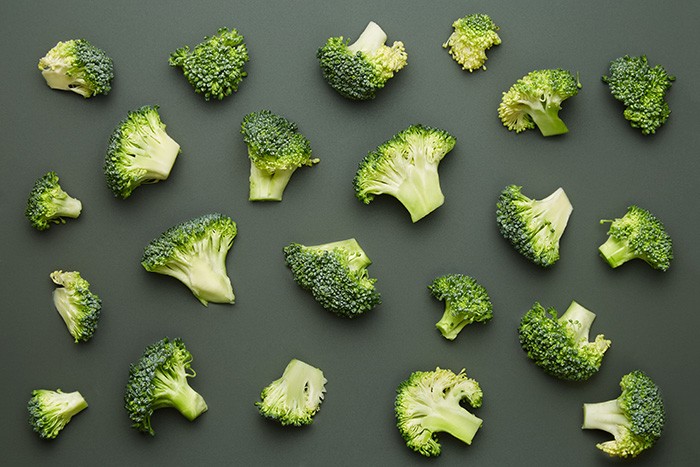Easy ways to eat more fruit and veg
Fruit and veg are always grouped together in the “eat-more-of-these” category, yet are very different types of food. Here’s how to hit your daily intake target a healthier way
If you’ve ever been to a pub quiz you’ll know that the tomato is a fruit. And, as the saying goes, knowledge is knowing a tomato is a fruit; wisdom is knowing not to put it in a fruit salad.
You may also know you should eat five servings of fruit and veg per day. That target was set after a 2003 joint United Nations and World Health Organisation report recommendied we eat 400g of fruit and vegetables per day five 80g servings) to reduce the risks of heart disease, cancer and obesity.
But you won’t be surprised to learn that 64% of Brits fail to hit this daily target, so says a YouGov poll of more than 10,000 adults. If you’re in this majority your health will thank you for upping your daily intake.
Yet one problematic question remains, especially if you want to eat for a leaner body: how can a 250ml glass of orange juice, packed with 22g of sugar, count as one serving in the same way as a portion of broccoli that contains just 27 calories, 2g of dietary fibre and a host of other health-boosting nutrients?
Should you eat more fruit?
It’s not just tomatoes that are technically fruits: avocados, bell peppers, aubergines and olives are too. But rhubarb, that classic dessert pie filling, is a vegetable. And don’t get us started on the banana, which isn’t actually a fruit but a herb.
However, when most people think of a fruit they imagine the sweet and juicy kind that are high in fructose, a type of fruit sugar, such as oranges, melons, pineapples and all varieties of berries. These fruits are high in sugar – it’s why they are delicious – yet surprisingly low in the essential nutrients our bodies need to thrive.
Increase your intake of vitamin C
Many fruits contain a decent dose of vitamin C, a water-soluble vitamin with powerful antioxidant properties, but they are far from the best source of this vitamin and contain little else of dietary value.
Consider that a 100g orange – the one fruit most associated with vitamin C – contains 88% of your recommended daily intake, but the same amount of bell pepper contains 134% of your RDI. Even the humble potato – which is high in carbs and calories so has a very different nutrient profile to types of veg helpful for fat loss, such as leafy greens – contains 32% of your vitamin C RDI per 100g serving.
Eat more fibre for better gut health
Despite some obvious differences, primarily with fruits being higher in sugar and vegetables being high in nutrients yet low in carbs and calories, they do have compounds in common. Both contain fibre – which is important for good digestion – and polyphenols, a type of antioxidant that combats the potential damage caused to your cells by free radicals.
But relying on fruits to reach your five-a-day at the expense of vegetables, which is tempting because an apple is quicker, easier and tastier to eat than a bunch of broccoli, isn’t the best approach when trying to build a leaner body.
Eat a wide range of fruit and veg
Many people get most of their five-a-day from nutrient-light, high-sugar fruits, which means their diets are less balanced and varied, and so they’ll struggle to consume the widest-possible range of essential micronutrients and many other beneficial compounds.
And because fruit isn’t as filling as vegetables or foods containing protein or fats, it’s very easy to over-eat it – and especially easy to over-drink fruit juice. And it’s just as easy to believe that you’re taking the healthy option when you are actually consuming a significant amount of calories in the form of sugar.
Eat more veg for faster fat loss
On the flip side veg, because of its higher fibre content, is very filling and almost impossible to over-eat. And every type of veg has its own unique nutrient profile so the more varieties you eat the greater your chances of avoiding any vitamin or mineral deficiency.
Each meal you eat should contain two fist-sized amounts of vegetables – as we explain in the New Body Plan Perfect Portion eating guide – and ideally each meal will contain different types of veg to ensure you consume a complete range of micronutrients.
Find your perfect fat-loss plan!
Take the New Body quiz!
7 ways to eat for fat loss and get a leaner and stronger body

